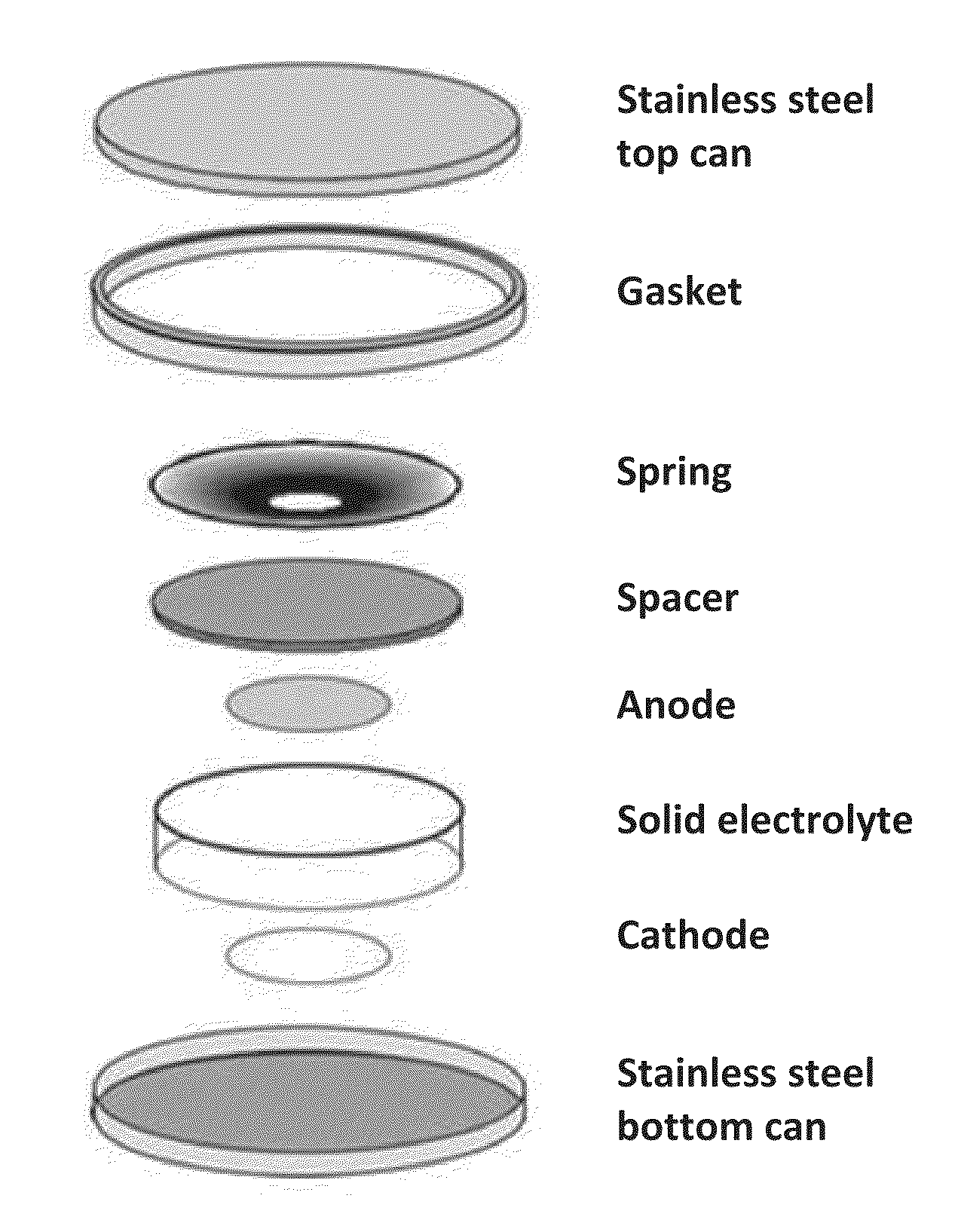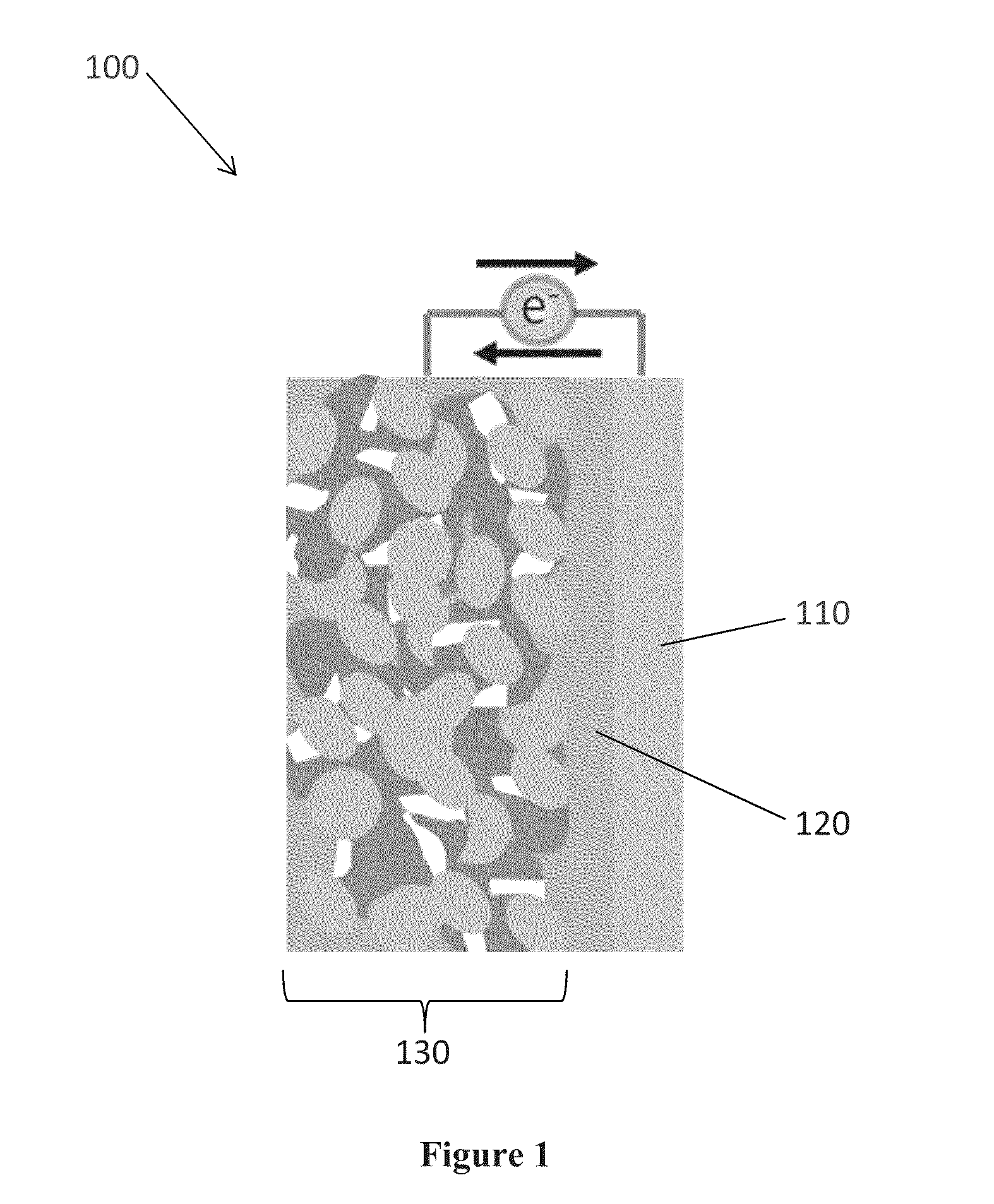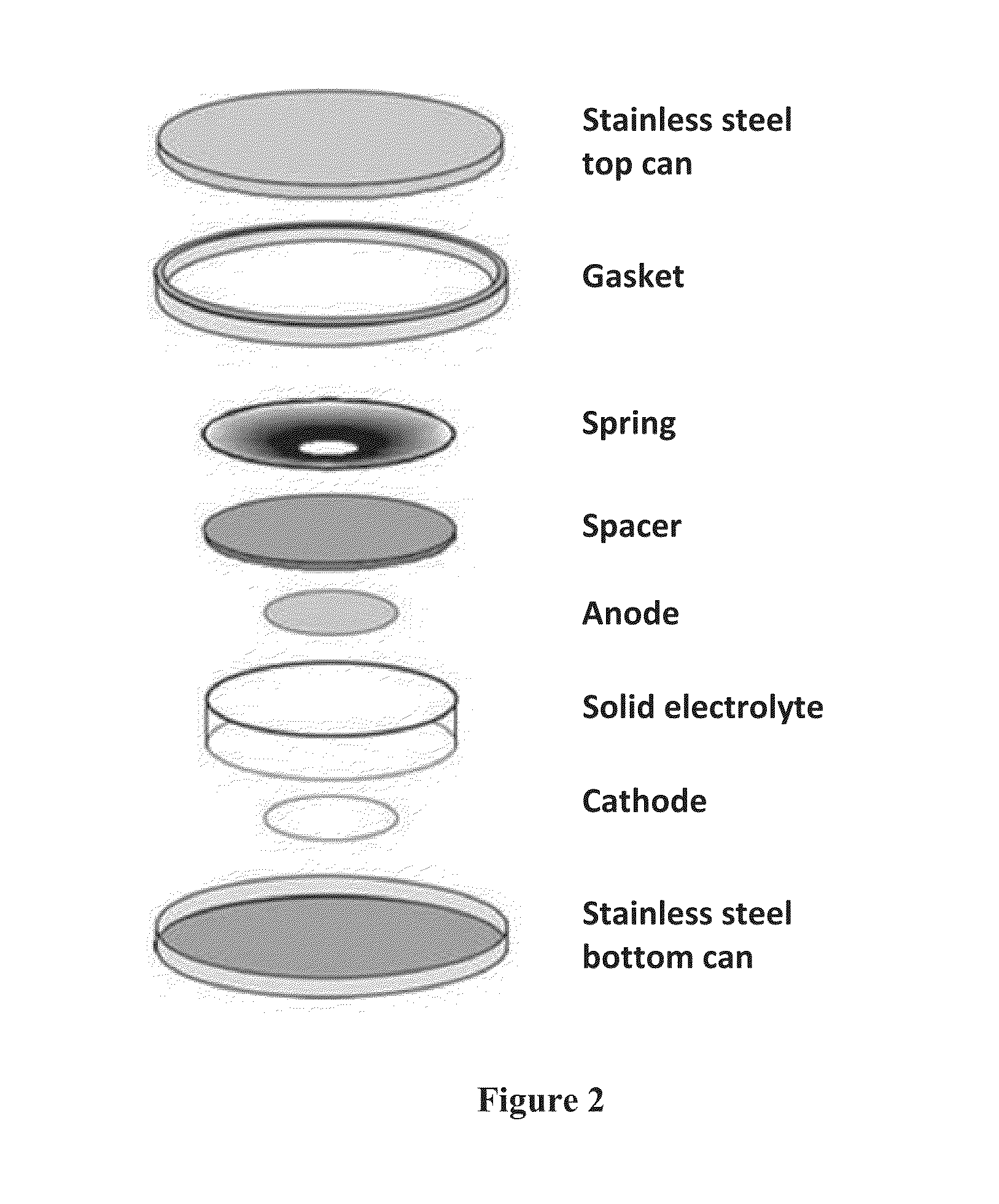Methods and compositions for lithium ion batteries
a lithium ion battery and lithium ion technology, applied in the field of lithium ion batteries, can solve the problems of inferior electrochemical performance, low ionic conductivity, and serious safety problems
- Summary
- Abstract
- Description
- Claims
- Application Information
AI Technical Summary
Benefits of technology
Problems solved by technology
Method used
Image
Examples
Embodiment Construction
[0042]The present invention is directed to Li-ion batteries, methods of manufacturing batteries, and electrolyte compositions that enable increased power and energy density and cycle life, reduced costs from the use of low-cost precursor which are compatible with high-volume manufacturing, and improved safety because of the absence of flammable electrolytes.
[0043]The present invention also involves the use of specific low melting point inorganic salts as electrolytes. The use of these materials allows the batteries to be fabricated at relatively low temperatures between approximately 100 to approximately 300 degrees Celsius.
[0044]In one embodiment, the electrolyte is in a molten or softened state during the fabrication process. This can ensure intimate contacts among the particles of the electrolyte and electrode. In addition, because of the relatively low fabrication temperatures, the properties and structures of electrode active materials will not deteriorate during the fabricatio...
PUM
| Property | Measurement | Unit |
|---|---|---|
| operating temperature | aaaaa | aaaaa |
| melting point | aaaaa | aaaaa |
| temperatures | aaaaa | aaaaa |
Abstract
Description
Claims
Application Information
 Login to View More
Login to View More - R&D
- Intellectual Property
- Life Sciences
- Materials
- Tech Scout
- Unparalleled Data Quality
- Higher Quality Content
- 60% Fewer Hallucinations
Browse by: Latest US Patents, China's latest patents, Technical Efficacy Thesaurus, Application Domain, Technology Topic, Popular Technical Reports.
© 2025 PatSnap. All rights reserved.Legal|Privacy policy|Modern Slavery Act Transparency Statement|Sitemap|About US| Contact US: help@patsnap.com



